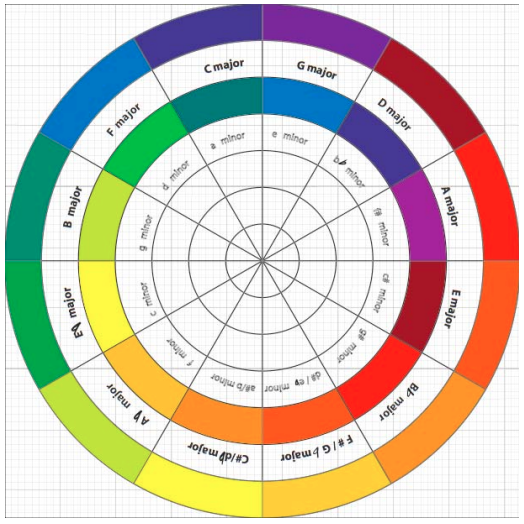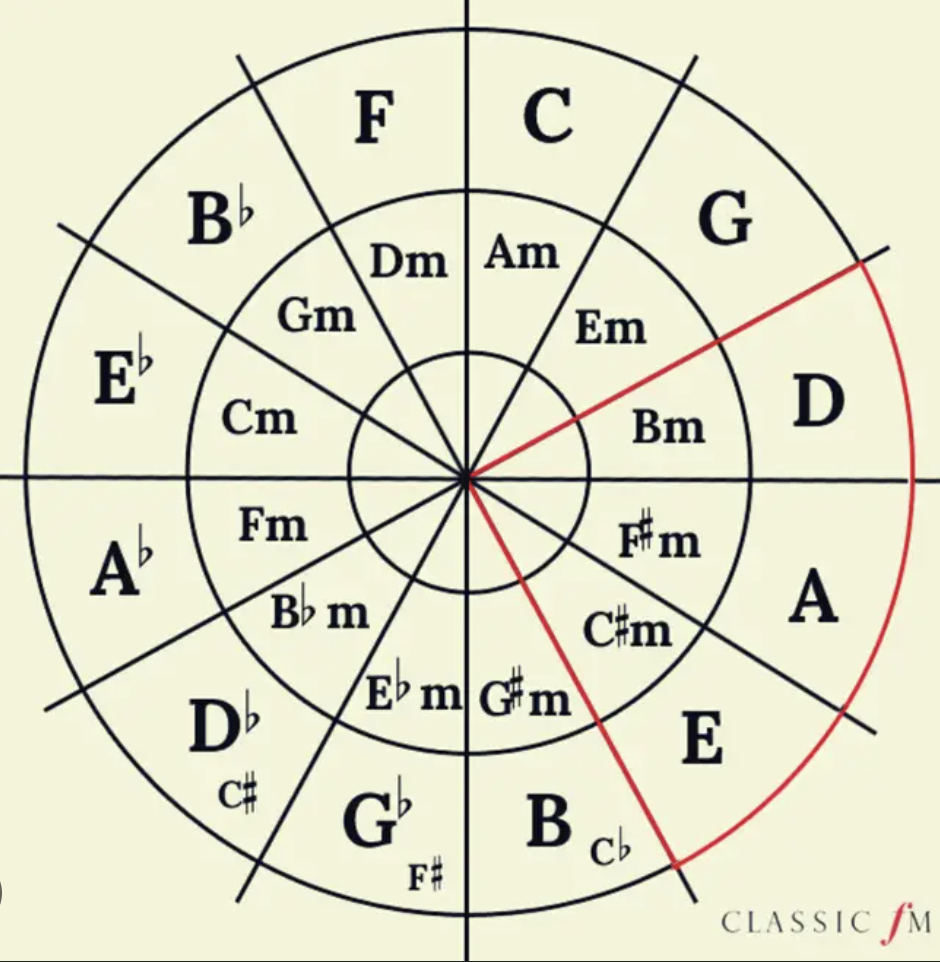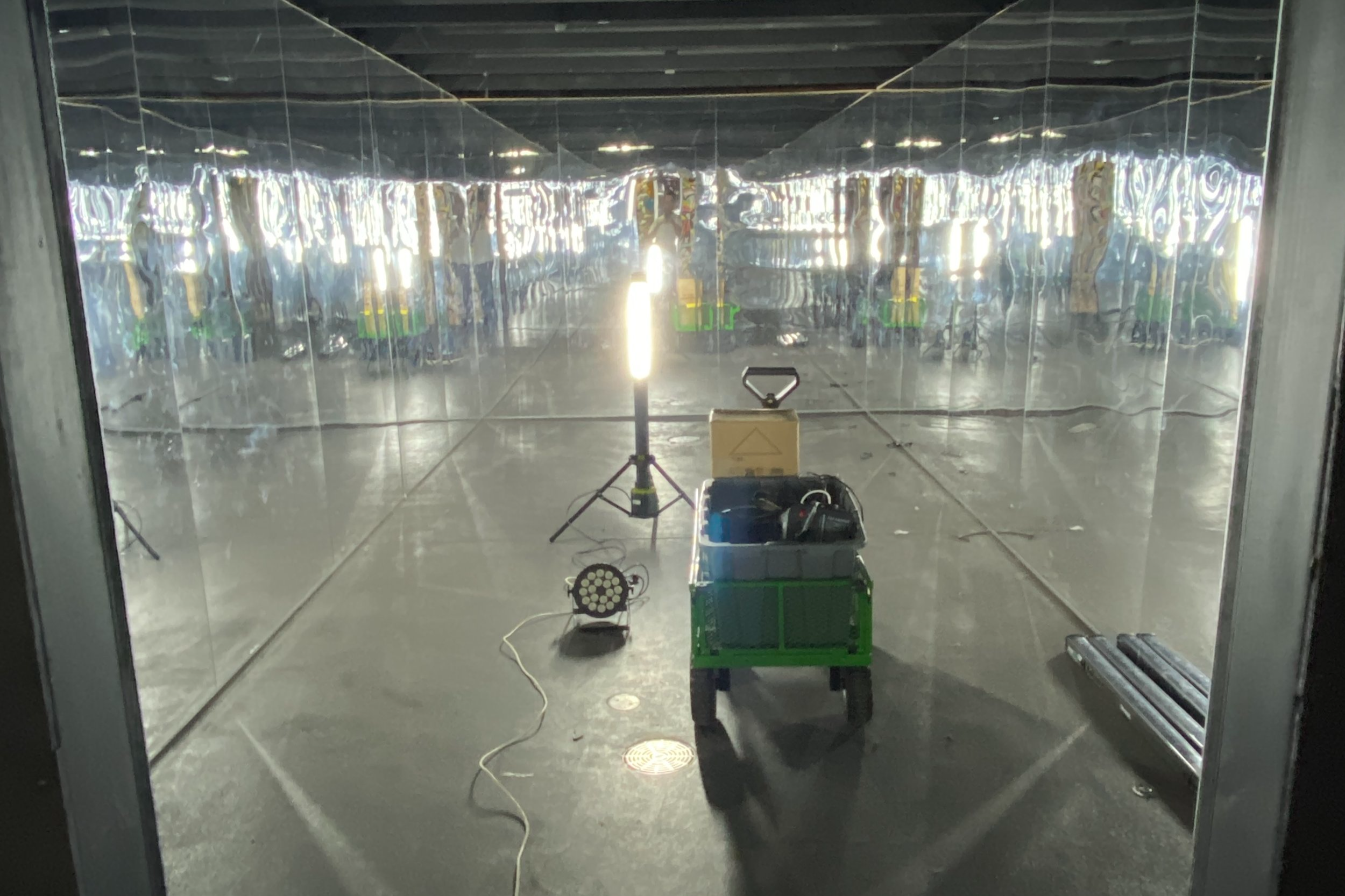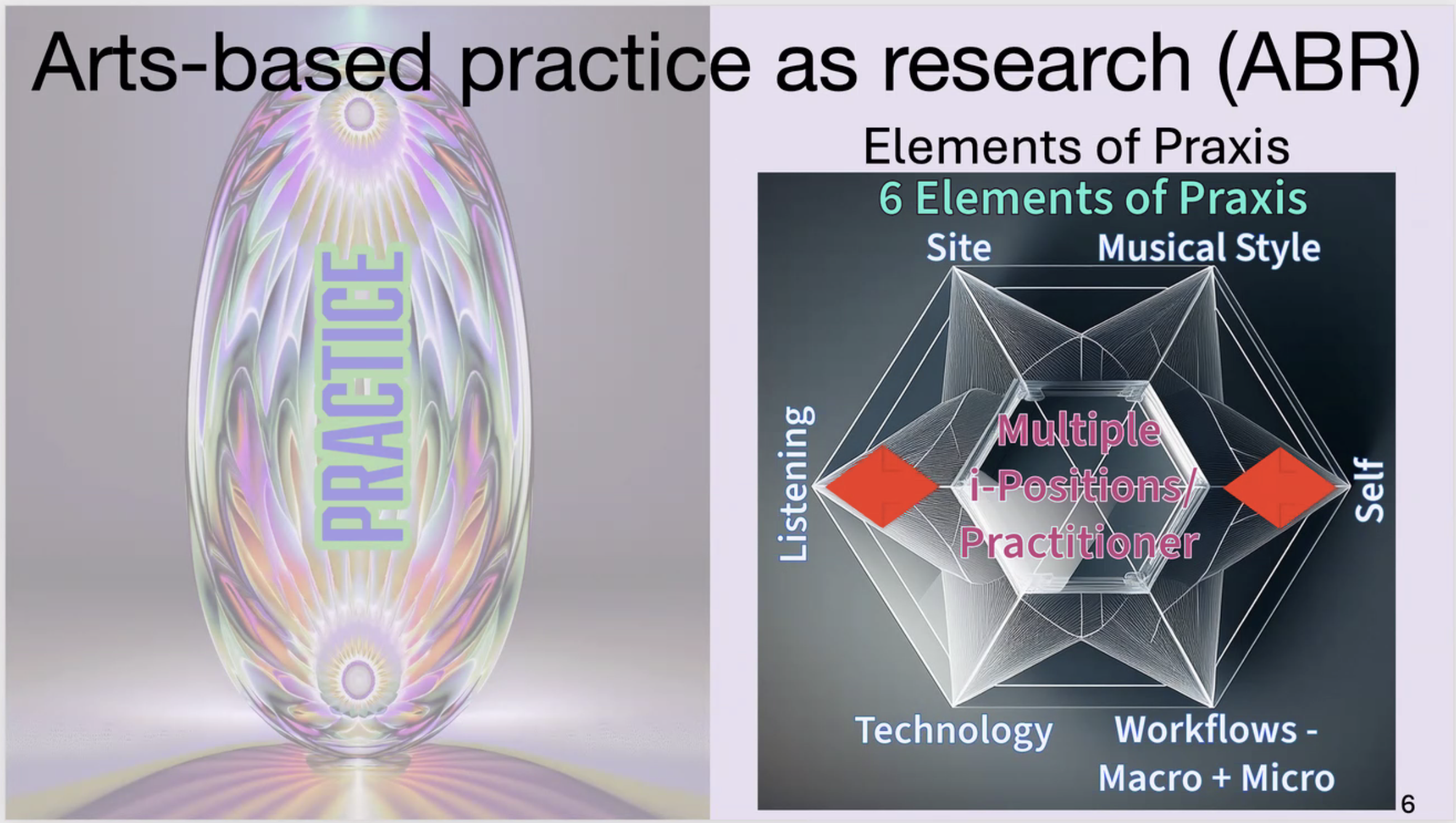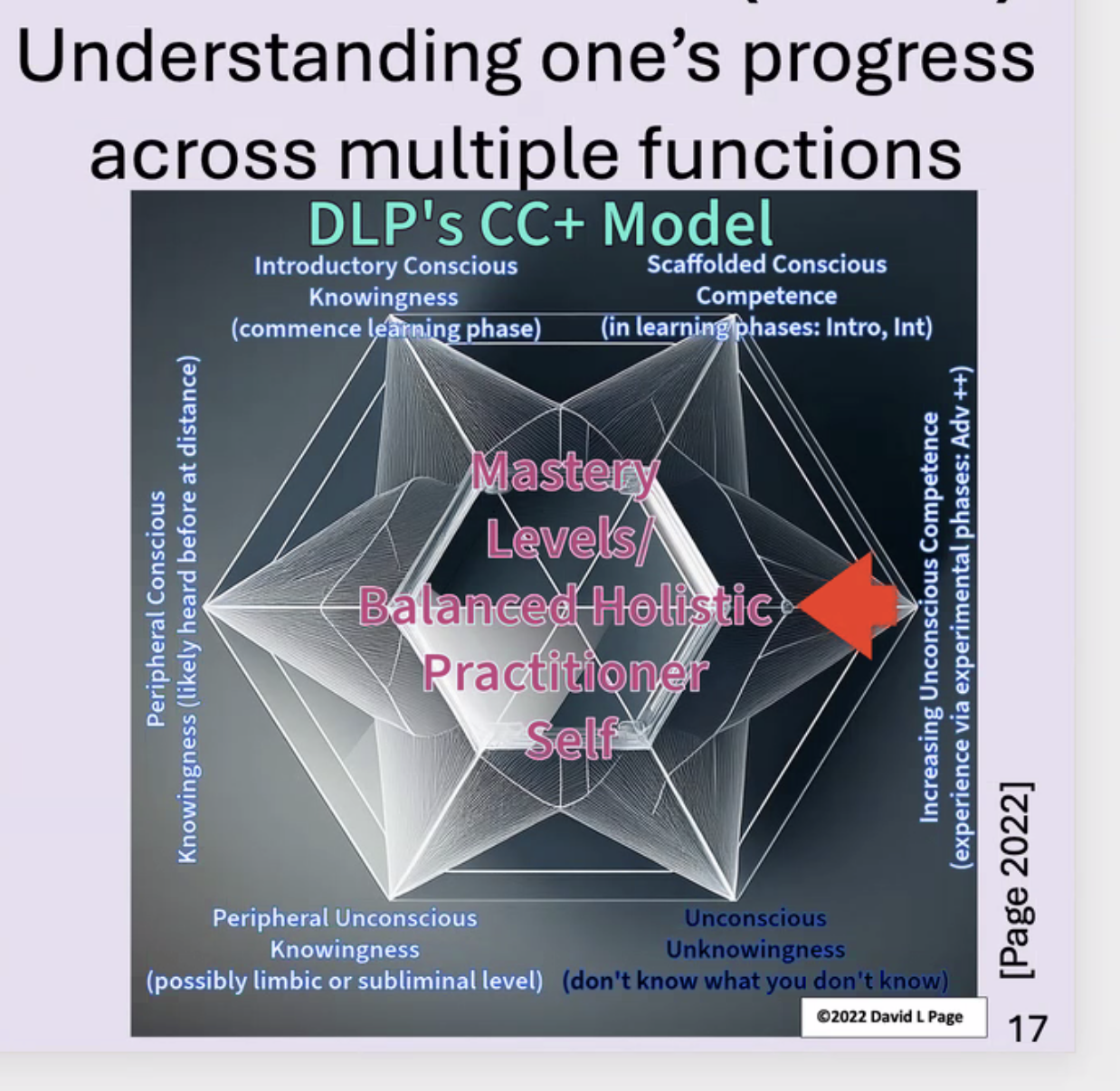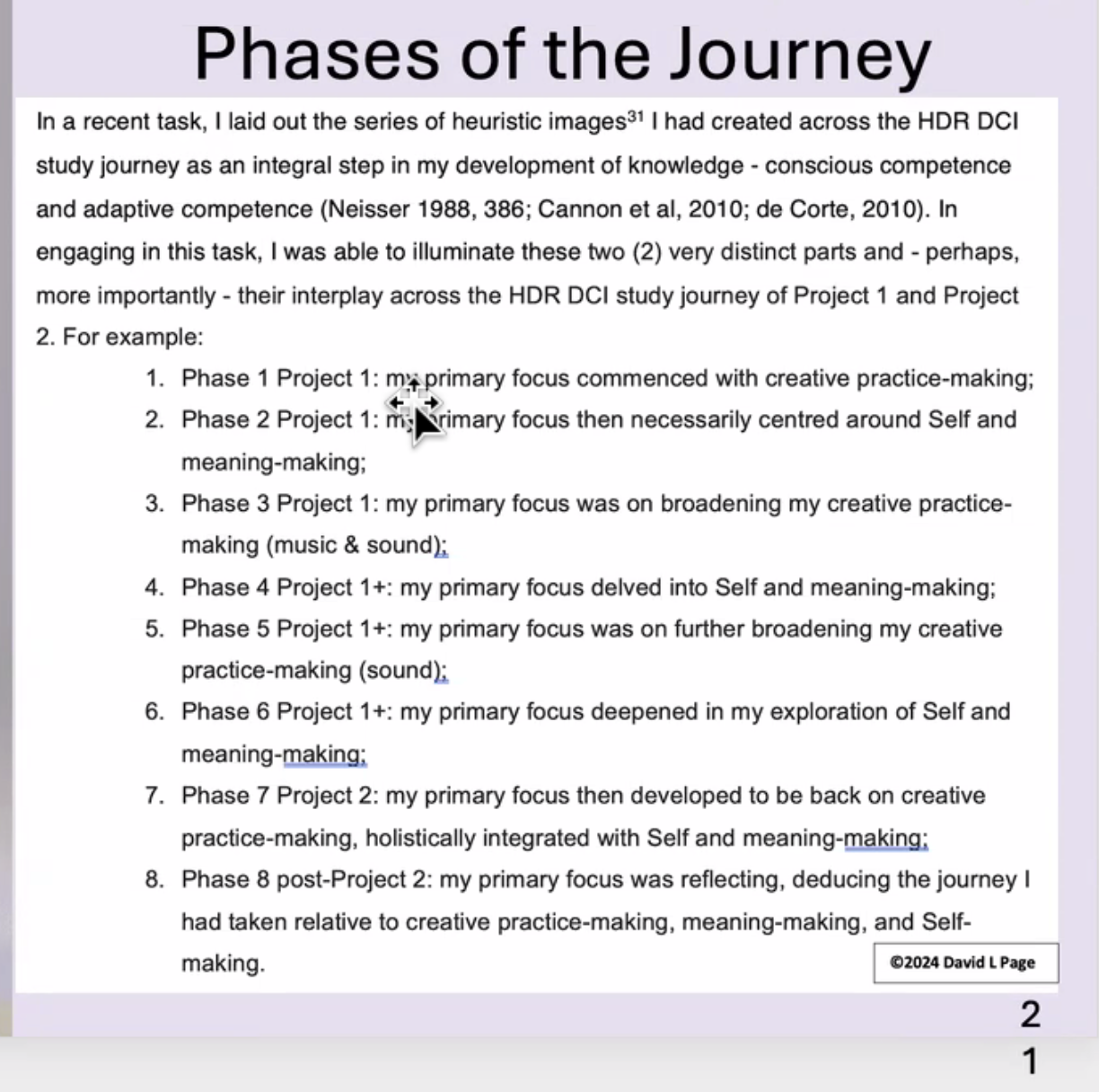CIM401
Week 1 Pre-existing Creative Concepts from previous modules
CIM400: My first event involving DJ and venue booking, marketing, ticket sales and live projection mapping
Image 1. Video highlight by Chris Daly
CIM417 Open Work: A sonic film in the form of a 3min+ MP3 file that conceptually connects the circle of fifths and the heroes journey
Image 2 (Ox, J., 2007). Image 3 (gerardfriel.com, 2020) Image 4 (Longdon, V., 2023)
Week 2 Creative Sprint
Pre-class response: Interesting works of art from Yoko Ono and Mary Kelly. Ono's performative piece I find to be a commentary on social etiquettes and norms: if allowed to continue, would the actors have stripped Ono bare? Does the concept that it is performance art over-ride societies' responsibilties to intervene when a stranger's dignities are being removed? No doubt Yoko Ono is stating that she is merely a passenger in the seat of a socially unstable vehicle destined for chaos.
Mary Kelly's piece had a similar theme for me: The clinical, factory warehouse/ prison-like environment, harsh, self-awareness, dirty nappies and methodical analyses pointing to thoughts of humans being just a drab grey cog in the great machine. The observer forgets about the loving, caring nature of a mother-child relationship - no mentions of laughs, giggles and cuteness. I wonder if Mary Kelly has some trauma from her childhood that she is so desperate to get out. I found this artwork quite depressing.
In-class response - chatting with Cogniti’s Connie AI provided these prompts that I found interesting:
Empathy: Could Kelly’s stark portrayal be an attempt to foster empathy for mothers whose emotional experiences are overshadowed by the physical and societal demands of caregiving?
Resilience and adaptability: Engaging with challenging art like this can build emotional resilience. Instead of turning away from the discomfort, you’re exploring its source—showing curiosity and openness to growth.
Discomfort in art can be a catalyst for critical thinking and growth.
Balancing emotional reactions with intellectual exploration allows for a fuller understanding of challenging works.
Awareness of systemic critiques can help contextualize personal discomfort.
Conceptual/ Performance Art Idea
‘12 Steps’
Combining theoretical tools that use cycles of 12 in unusual ways. An interactive piece in an art gallery, where 12 pressure pads are available for the audience to step on. Each pad triggers a recorded piano note in a loudspeaker. 12 loudspeakers in a circle each connected to the individual pads creates an ambisonic environment. The pads with their loudspeakers are at different heights on plinths and are different colours. The piece explores themes of noise vs music, harmony vs dissonance, audience participation/ collaboration and human musicality.
The piece invites the audience to co-create in an immersive, spatial experience and the exploration of the number 12 adds symbolic and structural complexity. Interpreting the piece is done on many levels: physically, sensorially, intellectually. The opportunity for multiple audience members to step on multiple pads allows for both a musical performance to be executed, or chaos to reign supreme.
Potential directions to develop this idea further in include incorporating the zodiac signs, dodecahedrons, clock faces, as well as programmable lighting or projection mapping to re-enforce the multi-sensory environment.
Reflection
I found this excercise incredibly inspiring: by changing my core concept around it brought depth and new meaning to my focus project. Whilst still in it’s infancy, I’m exploring the meaning of the number 12 and it’s cyclical nature, and asking why it has so much value to human beings. Besides the obvious ease of dividing and counting in bases of 12 mathematically, it seems to possess some sort of spiritual quality too. I have been finding the number 12 in many deeply rooted technologies, wisdoms, tools and theories. My methodological process benefitted from this exercise with the addition of the audience participation element, the dichotomy of harmony vs dissonance, negotiation of meaning and human-centred design. This has inspired me to think of other directions I might take for my focus project: I have more questions in my head, like ‘how can I bring more conceptual depth to this project by interweaving different 12 step cycles together?’, ‘how will the audience know the true meaning of the artwork?’, ‘what other sensory elements can I incorporate?’
From a semiotic perspective, the artwork explores the culturally constructed signs of structure/ beauty and chaos in music with it’s theme of harmony vs dissonance, as well as challenging the traditional signs of musical expertise with the invitation of participation to untrained audiences. On a physical level, the audience signals their participation with the action of stepping (or otherwise physically triggering) the pads, and the resulting audiovisual stimuli provokes a reflective interpretation. The speed and amount of repetition of their actions allows them to intellectually and emotionally engage with the resulting sensorial experiences and derive different meanings from the artwork.
Week 3 Dadaism
After conducting research into Dadaism, I noticed its historical relevance to WW1 and drew connections to how, early in the war, there was a sense of glory, duty, and adventurism among the soldiers who signed up, which ultimately led to a total disaster, obscuring any other meaning than hell. I compare this to the ideals and romanticism of art before this time. In modern times, the allure of being an artist can equally become a nightmarish black-hole of insurmountable challenges and stalemates to the unsuspecting optimist. Everybody wants to be a rockstar.
How does this impact my focus project at this stage?
Key Points - With the help of Connie AI (https://app.cogniti.ai/agents/)
Emphasis of concept over form
Collaboration and Interdisciplinarity
Celebration of Chance and Spontaneity
Technological Integration
Image 5: Dadaism in practice - Shut Up! by Chris Daly 2025
In the above right Dadaist ‘Readymade/ Assemblage’, I took just the nearest objects on my desk and snapped a black and white photo of them. The juxtaposition of a microphone being an instrument of aural magnification, and the earplugs being the opposite, with the third object being a pair of heavy duty snips arranged in such a way as to mimmick the action of cutting the cable from the microphone; I called the piece ‘Shut Up!’. My intention is to invite the audience to find the message by asking why these objects were chosen, and placed in a particular way, in order to ascertain a conceptual meaning instead of an aesthetic.
This particular Dadaist direction has me thinking about my focus project in the following ways: what meaning do I wish my audience to find based on their expectations of the physical objects they find in my performative piece? My idea is as follows:
What if instead of the outcome being purely musical in nature (as I discussed in my Week 2 ideation), the pads were triggering phases of the Hero’s Journey? This could be displayed by visuals from a projector. The result being a randomisation of the order of the Hero’s Journey, unwittingly ordered in time by the spontaneity and abstract performance of the audience as they step on their chosen sequence of pads. They could write a sequence longer or shorter than 12 steps, with repetitions and exclusions. Re-writing the traditional Hero’s Journey in a collaborative, immersive, conceptual environment.
Week 4
Experimental Ideation 3 - Poetic Inquiry
In forests, family and fortunes
Come challenges, criticisms and conflict
Guarded and gated
Disciplined and dedicated
Adventure, allies, adrenalin
Engagements, evil enemies
Bloody battles, burdens
Gauntlets, grief and grudges
Decorations, distinctions, donations
Apotheosis, atonement, acknowledgement
Empirical exhultations, elixirs
Bounty, beauty, bliss
Poem By Chris Daly 2025
Above, I present a poetic inquiry, inspired by one of the core concepts of my focus project - combining the Hero’s Journey and the Circle of Fifths. I am exploring what happens when I combine these two cycles of 12 parts as part of a qualitative research methodology. Each line of my poem represents a phase of the Hero’s Journey, matched with a tonal centre of the Circle of Fifths, i.e. The first line is ‘In forests, families and fortunes’ - this line is informed by the tonal key of F, and the first phase of the Hero’s Journey ‘The Ordinary World’. The second line follows with ‘Come challenges, criticisms and conflict’ - we have modulated up a fifth to the key of C, and the second phase of the Hero’s Journey ‘Call to Adventure/ Trouble in a faraway land’, and so on. The tonal key dictates the first letter of each word, and the phase of the Hero’s Journey matches the choice of each word in that line. In this way the poem creates an informed narrative that cycles through both the Hero’s Journey and the Circle of Fifths.
The main poetic tool used is alliteration, with some uneven iambic, tri- and tetrameters, odd rhythmical stuctures, some rhyming couplets and lots of other poetic devices. I tried to use words and synonyms that create the imagery dictated by the Hero’s Journey, with the strict limitation of alliteration constrained to the letter of the corresponding key in the Circle of Fifths. Another thing I aimed for was keeping with the number 12. The 10th line is 12 syllables, the last 2 verses are comprised of 12 words each (3 words per line x 4 lines per verse).
Week 5
The last week was spent exploring divergent ideas (Harvard Professional Development, 2016) that might contribute towards my focus project for this module. The foundational concept based on previous work is the exploration of combining theoretical circles of 12 - specifically the Circle of Fifths, the Hero’s Journey and Jack Ox’s Colour Wheel, in ways that they weren’t designed for. These ideas came up this week:
Core Games (https://www.coregames.com/) - a virtual gaming space that could replace a physical venue for a performance piece. Currently my chosen venue Otherworld is closed for 2 months for winter. Example: https://www.youtube.com/watch?v=CgtjXMQS5II
Touch Designer (https://alltd.org/tag/kinect/) - This software is used for interactive installations such as those found at Otherworld. My initial idea is that it could replace the pressure pads from week 2’s concept.
Installation pitch - rather than doing a performance piece at a venue, I could create marketing content and examples for an art installation pitch to be presented to art galleries such as Otherworld.
Sonic Film Performance - expanding on the work I did for CIM417 - A 1hr DJ set that emotionally follows the Hero’s Journey and Circle of Fifths, with programmed lightshow that utilises 12 subdivisions of the RGB Colour Wheel
Week 6
This week my ideation has converged towards two ideas for my project pitch. These ideas centre around the experimental merging of cycles 12, specifically the Hero’s Journey and the Cycle of Fifths, and exploring audience participation, interactivity and cyborgism (as suggested by lecturer Lola Montgomery).
Installation pitch - an interactive installation using a motion sensor (Kinect 2.0) and projection using TouchDesigner fluid particles, with colours and sound design
Virtual Film Experience - a Core Games environment in the form of an obstacle course, where each user can design their own avatar and explore a reactive gaming environment that changes with the music as the timeline moves through the Hero’s Journey.
Week 8
During Week 7 I received an unexpected text from Otherworld’s Artistic Director Chris Dekker inviting me for a meeting with him. I met up with him on Wednesday 9th of July and he offered me one of the spaces as a featured artist, as well as a job as a technician, helping to open the venue and maintain the installations. The room I have access to from Wednesday 16th July, and the job offer starts early October.
Image 6 The Mirror Room, Otherworld, 102 Jonson St, Byron Bay (otherworld.live) Image credit: Chris Dekker 2025
The Mirror Room
This room is 3m wide by 6m long by 2.4m high, with a painted black floor and ceiling, the walls being completely covered by large mirrors, which made me think of an artist I have collaborated with before: Andy Forbes, whose studio and Instagram page is called @smokenmirrorsstudio (Forbes, A., 2025). My plan for this space is to use it as an experimental environment for my sonic film piece: The Hero’s Journey. Using a smoke machine, speakers and a multitude of different lights, I will create an immersive environment with sound and lights that is inspired by the cyclical nature of the 12 phases of the Hero’s Journey and the musical Circle of Fifths. Using my original sonic film produced for CIM417 as a foundation, I will recompose the soundtrack and program a lightshow timeline that follows along. My submission for CIM401 will be a pitch in-situ for Otherworld as a featured local artist. New considerations will include the costs of the installation, operation manual, maintenance schedule (such as topping up smoke fluid), and a highlight reel and artist bio for their website.
On the positive side - my project is in a real venue, which is an incredible opportunity. However, the limiting factors of the mirrors mean that my motion sensor won't work (more specifically - the projections being driven by the motion sensor won’t work also) and I will therefore lose interactivity in exchange for more immersiveness. This is not a deal breaker as I think that limitations can be inspiring, and the Artistic Director of the venue is over the moon about the smoke machine, sound design and Heroes Journey elements of my pitch, and this is no doubt a big part of why he has offered me full reign of a significant space within the venue.
Next week I will need to survey the room and physically seal it for the purpose of keeping the smoke in, followed by bringing in my lights and experimenting with the placement of them and how the blinders, bee-eyes and lasers look in differing locations and heights. From there I will need to compose the music and program the lightshow, before finally producing an operation manual, cost structure, highlight reel and digital content package for the Otherworld website.
Graduate Seminar Reflection 1: Svenja Kratz
An incredible presentation from an artist who blends biomedical science and conceptual art. Drawing on her life experiences, desires, medical history and research, her work explores ideas of genetic legacy and immortality (Kratz, S., 2025)
Image 7: Screenshots from Svenja Kratz’ MCI Graduate Seminar presentation 18th July 2025 (Kratz, S., 2025)
Initially, I found Svenja’s presentation confronting and uncomfortable, but I soon discovered the true depth of her creative practice and the intriguing niche she has created through her work. She has taken inspiration from biomedical research and created artworks that explore concepts of immortalisation and genetic continuity. She has presented an alternative avenue for genetic offspring in the form of biomedical products, and stimulated the conversation around ethical entanglement. Svenja openly stokes the ironic fire of desire for permanence in a transient world, and dissects the reproductive instinct to build a Frankensteinian world.
I noted that her work grapples with the ideas of Existentialism in multiple ways: there are her maternal instincts, the fact that she hasn’t had children yet and that her biological reproductive clock is nearing it’s end. There is also the fact that she had a significant uterine tumour and called it her ‘Tumour Baby’: I note that she has made beauty out of misery, art out of pain. She captures the innate human desire to leave a legacy; to be remembered and have value after death.
Another thing in her work that I noticed was the Buddhist concept of impermanence: that all we have is the present and we must make the best of it as we can; to focus on our thoughts and actions instead of what we cannot change. In this way one could see Svenja as an Optimist.
There were some questions I put in my notes of this presentation that I’m not sure I have the answers to, but I’ll leave them here:
1. In terms of the ‘Creative Industries’ (the namesake of this course), what commercial value does Svenja’s work hold? What is her art worth and how does one quantify it’s value? To the art world? To society? To science?
2. What is the cultural significance of Svenja’s work? How will other artists be inspired? Will regular people want to copy her ideas of genetic longevity through biomedical products? Could the commercialisation of this idea be the answer to the question of the industrialisation of her creativity?
3. On the topic of reproductivity and the maternal instinct, will males find as much value in Svenja’s work? Is her work equally meant for both genders?
Week 9
The last week was spent gaining access to the venue, sorting out power, light, a table and chair, as well as bringing in the bulk of my personal lighting gear in a trolley. The space is a little larger than I initially noticed, which stretched my inventory of cabling to the max. I roughly spaced out where I thought the lighting fixtures would go and ran the cabling that I had on hand.
Image 8: Loading into the Mirror Room. Image credit: Chris Daly, 2025
My timeline towards submission next week is as follows:
1. Install lighting fixtures, power and data cables, including safety considerations
2. Refine cyclical ‘sonic film’ soundtrack
3. Program lighting to follow soundtrack
4. Troubleshooting and testing of all equipment, including smoke machine
5. Filming of video highlight reel for portfolio
6. Creation of operator manual and maintenance schedule for venue
Graduate Seminar 2 Toby Wren
‘Songs For Dead Sailors’ (Wren, T. , 2025) is a jazz album comprised of compositions inspired by a painting of a shipwreck in the NGV, accompanied by visual animations to be projected during live performances of the album. He uses the dark imagery of the painting to inform a musical soundtrack that, when combined with the visuals, creates a multi-sensory narrative performance. Wren mentioned how he had a lot of creative anxiety during his work, and this made me think about the juxtaposition of the aesthetics of his inspiration vs the dramatisation of shipwrecks and dead sailors. The emotional toll of trying to create a beautiful piece of work, inspired by a beautiful painting, whilst capturing the angst, pain and devastation of being a shipwrecked sailor. This reminds me of Gonzo journalism, where the storyteller is living out the very story they are telling (Mosser, J., 2012).
My Studio 2 project does have some similarities with 'Songs For Dead Sailors', in that they are both fundamentally audiovisual narratives. My project is less of a performative piece and more of an interactive installation within a broader gallery space. I observe that Toby has used a painting that depicts a narrative as his inspiration for his composition, whereas my work is more conceptual in that it is experimenting with theories and technologies in ways that they weren’t designed for. My final observation is that commercially, both projects are venue-based and financially serviced through ticket sales within a broader live entertainment industry.
Week 10
I have run into a bit of a problem this last week: the locks have been changed at Otherworld and I have lost access to the venue. Currently 90% of the gear required for the installation is in there, which I don’t need for my pitch, but it means I may not be able to finish the installation in time for project submission at the end of this week. In the mean time I can work on the documentation for the pitch, as well as re-work the soundtrack and program the lights in the software. In this way I will be prepared at short notice should I gain access to the venue before Sunday, however, in the case I don’t get access, I have a pitch document as the main deliverable for this project.
1 day before submission date and I will not get the chance to install my work in time for submission, however, I have reached out to the Artistic Director Chris Dekker and provided him a copy of my pitch and asked for some feedback, which I will include at the bottom of this page.
Graduate Seminar 3 David L Page
David’s presentation revolved around the subject of ‘arts-based practice as research’. He has produced a 100-minute-long soundscape inspired by formative events of his life’s journey. He explores concepts of trauma healing through musical expression, with the aid of some graphics for added inspiration. He uses this extensive musical piece as a resource for his research into creative practice. The music itself reminds me of a slowed-down version of progressive psytrance. Industrial and tribal sound effects, heartbeat-like percussion and the self-reflective nature of the loop-based composition draw the listener into their inner thoughts. The value of David’s work lies in his ability to break down his methodology into bite-sized chunks, as he describes his journey from roots-based music into the world of electroacoustic and sonic arts, exploring new technologies and identifying feminine vs masculine energies driving his musical practice. He states ‘I focused on observing and recording my actions and behaviours during my creative music-making practice sessions’ (Page, D., 2019).
Image 9: Screenshots from David Page’s Graduate Seminar presentation (Page, D., 2025)
What I found so similar to my current project in David’s work was the breaking down of the emotional phases of his journey to create a narrative-based sonic art piece. Whilst his piece is designed to be performed, and my work is immersive, the audience of each work is transported on an emotional journey using sound and visual cues. I note that Toby Wren’s ‘Songs For Dead Sailors’ has a similar intention for his audience, his work being based off a single painting as opposed to David’s life story, and my work being cycles of 12.
